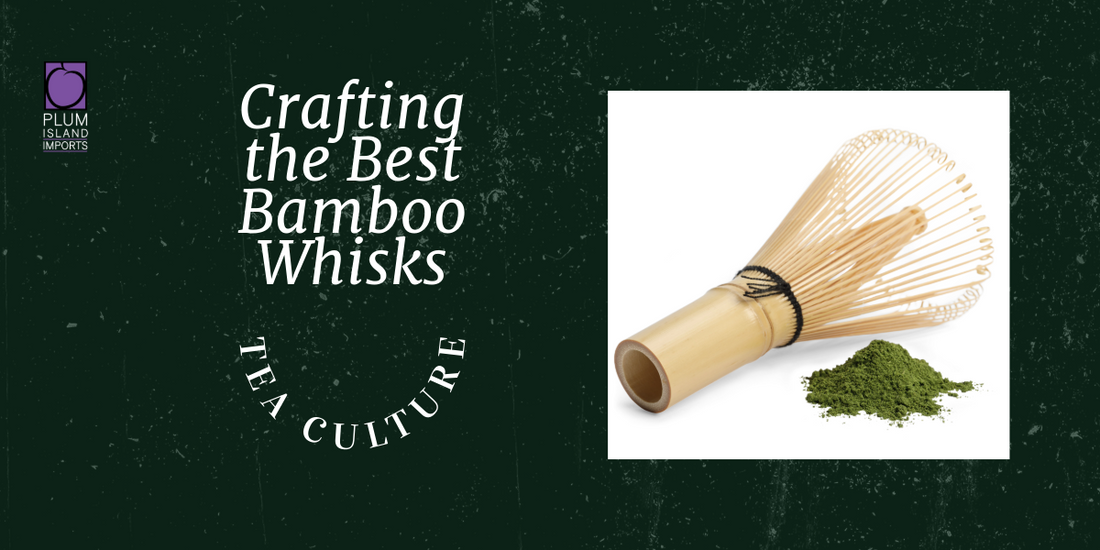The Art of Crafting Handmade Bamboo Whisks in Japan
In the tranquil villages of Japan, where ancient traditions and artisanal craftsmanship intertwine, the creation of handmade bamboo whisks, or "chasen," continues to be an art form passed down through generations. These whisks are not merely tools; they are emblematic of the Japanese tea ceremony's rich cultural heritage, embodying meticulous attention to detail and a profound respect for nature.
A Tradition Rooted in History
The history of bamboo whisks dates back over 500 years, originating during the Muromachi period (1336–1573). It was around this time that the tea ceremony, or "chanoyu," began to take shape under the influence of Zen Buddhism. The chasen became an essential tool for whisking matcha, or powdered green tea, into a frothy beverage, integral to the ritualistic preparation and consumption of tea.
The legendary Zen priest Murata Juko is often credited with formalizing the tea ceremony, emphasizing simplicity and the beauty of imperfection, principles that are deeply embedded in the craftsmanship of the chasen. Each whisk, carefully carved and shaped from a single piece of bamboo, reflects these Zen ideals, promoting a meditative and mindful experience.

The Bamboo Selection
The journey of a bamboo whisk begins in the bamboo groves, often nestled in the serene countryside of Nara, Japan. Here, artisans select the finest bamboo, typically from the species known as "madake" or "susudake," each offering unique qualities suited for different types of chasen.
Madake bamboo is prized for its strength and flexibility, while susudake, characterized by its aged, smoky hue, is often used for more decorative or ceremonial whisks. The selection process is crucial, as the quality of the bamboo directly impacts the durability and performance of the finished whisk.
The Crafting Process
Creating a chasen is an intricate process that requires patience, precision, and a deep understanding of the material. The journey from raw bamboo to a finished whisk involves several meticulous steps:
1. Harvesting and Drying
Bamboo is typically harvested during the colder months when its sap content is lower. This minimizes the risk of splitting and ensures a smoother carving process. After harvesting, the bamboo is left to dry naturally for several months, allowing it to cure and harden.
2. Shaping the Handle and Tines
Once the bamboo has dried, artisans cut it into shorter sections, each destined to become a chasen. The outer skin is carefully shaved away, revealing the smooth, pale inner surface. The upper portion of the bamboo is then meticulously split into numerous thin tines using a fine knife, a process known as "tines splitting" or "hoeing."

The number of tines can vary greatly, ranging from 16 to over 120, depending on the intended use of the whisk. Whisks with fewer tines are typically used for thicker tea (koicha), while those with more tines are suitable for thinner tea (usucha).
3. Carving and Curving
After the tines are split, each one is individually carved and shaped. This stage requires exceptional skill, as the artisan must ensure uniformity and balance. The tines are then curled outward, creating the distinctive shape of the chasen.
The curling is achieved by soaking the tines in hot water and then gently bending them around a heated metal rod. This step is crucial for ensuring the whisk's flexibility and effectiveness in frothing the tea.
4. Finishing Touches
The final stage involves trimming and smoothing the tines, ensuring there are no rough edges that could damage the tea bowl. The base of the whisk is also refined, providing a comfortable grip for the user.
Some chasen are adorned with intricate patterns or inscriptions, adding an element of artistry and personalization. These decorative touches often reflect the artisan's signature style and can transform a simple whisk into a work of art.

The Role of the Chasen in the Tea Ceremony
In the Japanese tea ceremony, every movement is deliberate, and every tool holds symbolic significance. The chasen plays a vital role in achieving the perfect bowl of matcha, blending the powdered tea with hot water to create a harmonious balance of flavors and textures.
The act of whisking itself is a meditative practice, requiring focus and a gentle, rhythmic motion. As the tea froths and foams, it symbolizes the fleeting beauty of life, a central tenet of Zen philosophy.
Preserving a Timeless Tradition
Despite the advent of modern manufacturing techniques, the art of crafting handmade bamboo whisks continues to thrive, thanks in large part to dedicated artisans who uphold these time-honored methods. In regions like Takayama, known for its chasen production, families have been crafting whisks for generations, each passing down their knowledge and skills to the next.
Efforts to preserve this tradition extend beyond Japan's borders, with tea enthusiasts and cultural organizations around the world recognizing the value of authentic, handcrafted chasen. Workshops and exhibitions often highlight the intricate process and cultural significance of these humble yet profound tools.
The Contemporary Appeal
In recent years, the global resurgence of interest in matcha has brought renewed attention to the chasen. As more people embrace the health benefits and ceremonial aspects of matcha, the demand for high-quality, handmade whisks has grown.
Artisans have responded by experimenting with new designs and techniques, blending traditional craftsmanship with modern aesthetics. This fusion has resulted in a diverse range of chasen, catering to both traditionalists and contemporary tea lovers.

Conclusion
The making of handmade bamboo whisks in Japan is more than just a craft; it is a testament to the enduring beauty of tradition, the harmony between human hands and natural materials, and the spiritual essence of the Japanese tea ceremony. Each chasen tells a story of dedication, artistry, and cultural heritage, offering a tangible connection to a centuries-old practice that continues to inspire and captivate tea enthusiasts around the world.
As we hold a chasen in our hands, we are reminded of the countless artisans who have meticulously carved, shaped, and perfected these delicate tools, preserving a legacy that transcends time. In every whisk of matcha, we taste not only the vibrant flavors of green tea but also the rich tapestry of history and tradition woven into the fabric of Japanese culture.

